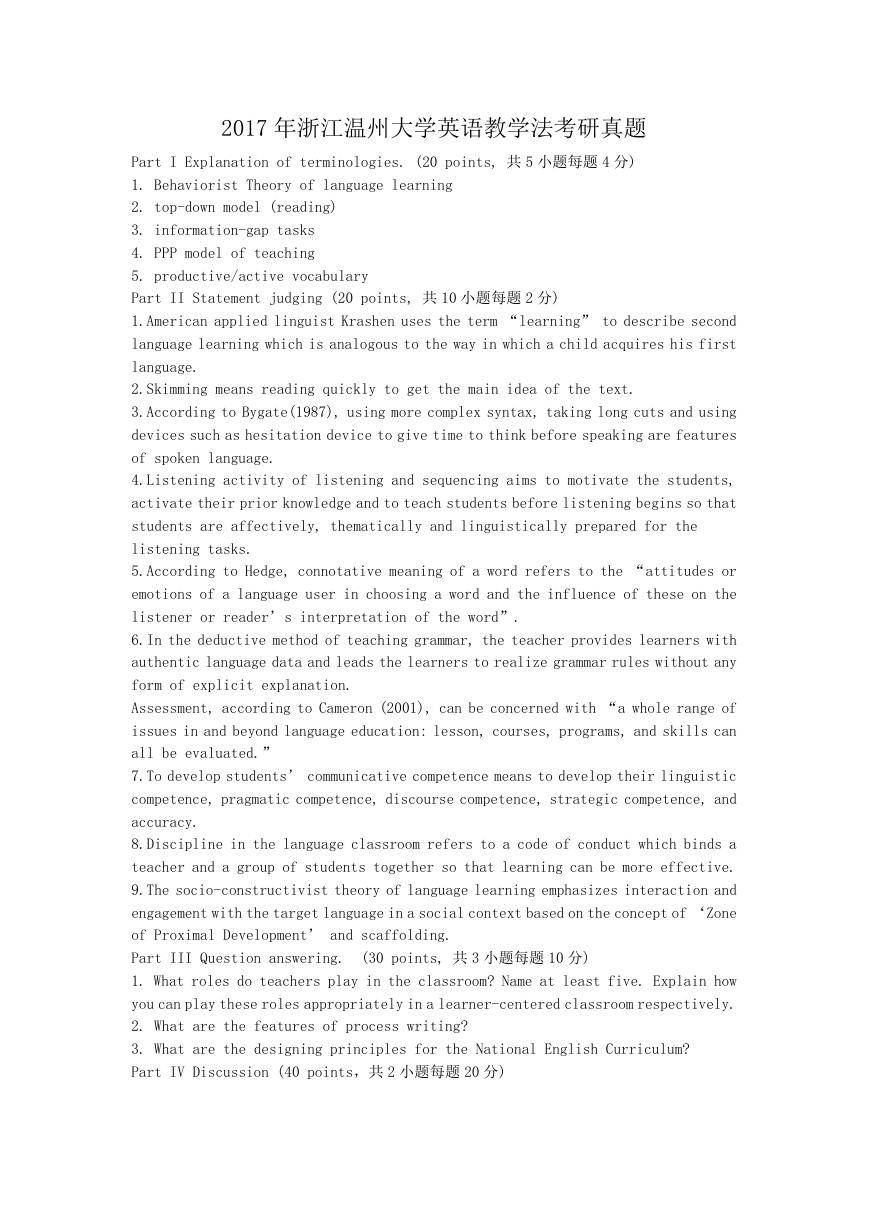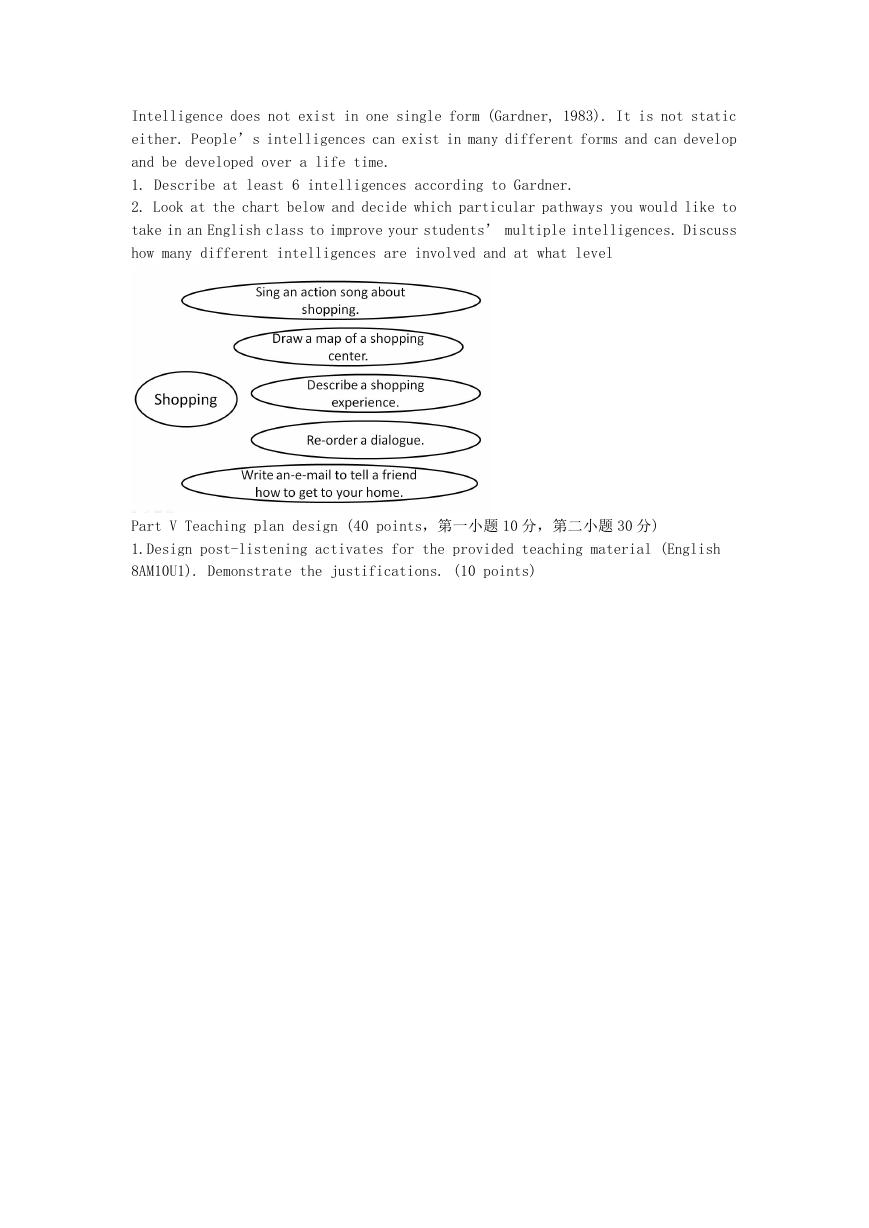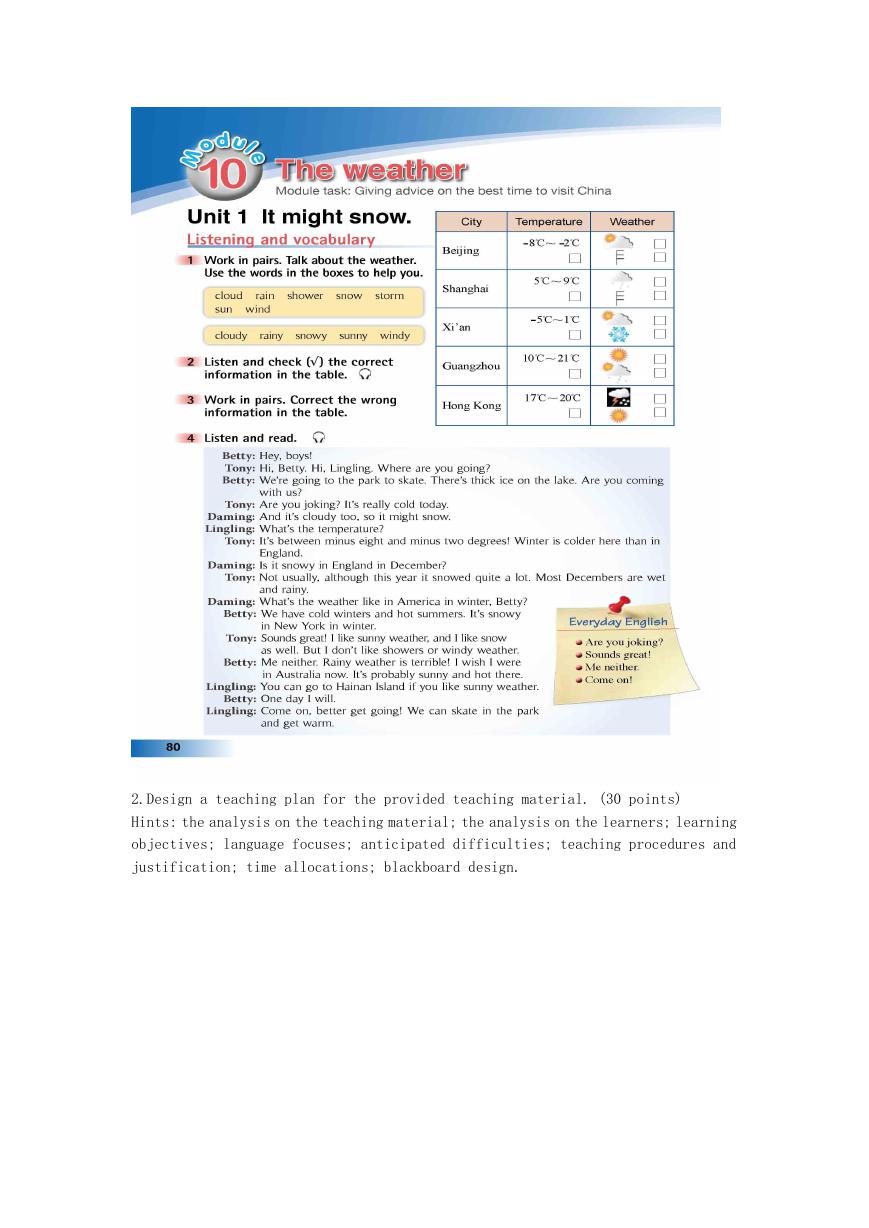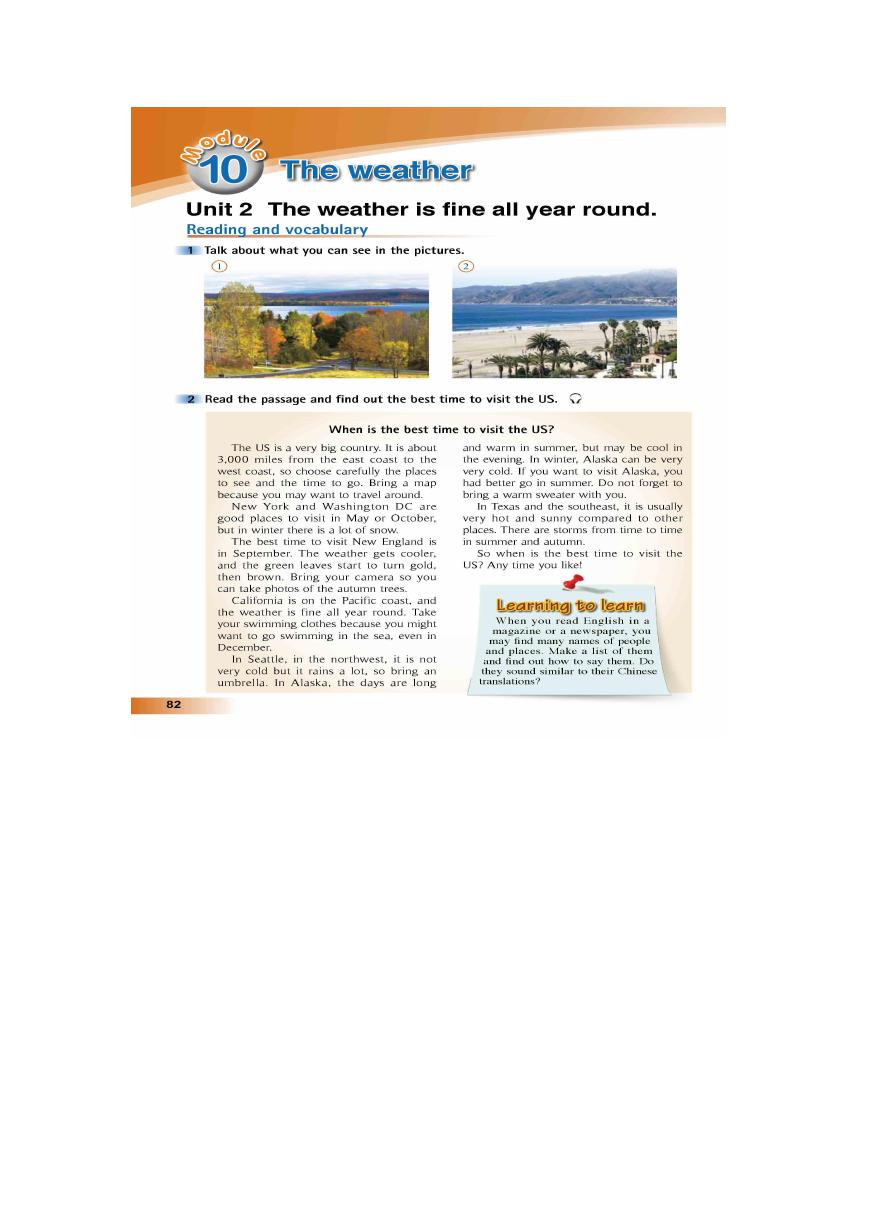2017 年浙江温州大学英语教学法考研真题
Part I Explanation of terminologies. (20 points, 共 5 小题每题 4 分)
1. Behaviorist Theory of language learning
2. top-down model (reading)
3. information-gap tasks
4. PPP model of teaching
5. productive/active vocabulary
Part II Statement judging (20 points, 共 10 小题每题 2 分)
1.American applied linguist Krashen uses the term “learning” to describe second
language learning which is analogous to the way in which a child acquires his first
language.
2.Skimming means reading quickly to get the main idea of the text.
3.According to Bygate(1987), using more complex syntax, taking long cuts and using
devices such as hesitation device to give time to think before speaking are features
of spoken language.
4.Listening activity of listening and sequencing aims to motivate the students,
activate their prior knowledge and to teach students before listening begins so that
students are affectively, thematically and linguistically prepared for the
listening tasks.
5.According to Hedge, connotative meaning of a word refers to the “attitudes or
emotions of a language user in choosing a word and the influence of these on the
listener or reader’s interpretation of the word”.
6.In the deductive method of teaching grammar, the teacher provides learners with
authentic language data and leads the learners to realize grammar rules without any
form of explicit explanation.
Assessment, according to Cameron (2001), can be concerned with “a whole range of
issues in and beyond language education: lesson, courses, programs, and skills can
all be evaluated.”
7.To develop students’ communicative competence means to develop their linguistic
competence, pragmatic competence, discourse competence, strategic competence, and
accuracy.
8.Discipline in the language classroom refers to a code of conduct which binds a
teacher and a group of students together so that learning can be more effective.
9.The socio-constructivist theory of language learning emphasizes interaction and
engagement with the target language in a social context based on the concept of ‘Zone
of Proximal Development’ and scaffolding.
Part III Question answering.
1. What roles do teachers play in the classroom? Name at least five. Explain how
you can play these roles appropriately in a learner-centered classroom respectively.
2. What are the features of process writing?
3. What are the designing principles for the National English Curriculum?
Part IV Discussion (40 points,共 2 小题每题 20 分)
(30 points, 共 3 小题每题 10 分)
�
Intelligence does not exist in one single form (Gardner, 1983). It is not static
either. People’s intelligences can exist in many different forms and can develop
and be developed over a life time.
1. Describe at least 6 intelligences according to Gardner.
2. Look at the chart below and decide which particular pathways you would like to
take in an English class to improve your students’ multiple intelligences. Discuss
how many different intelligences are involved and at what level
Part V Teaching plan design (40 points,第一小题 10 分,第二小题 30 分)
1.Design post-listening activates for the provided teaching material (English
8AM10U1). Demonstrate the justifications. (10 points)
�
2.Design a teaching plan for the provided teaching material. (30 points)
Hints: the analysis on the teaching material; the analysis on the learners; learning
objectives; language focuses; anticipated difficulties; teaching procedures and
justification; time allocations; blackboard design.
�
�








 2023年江西萍乡中考道德与法治真题及答案.doc
2023年江西萍乡中考道德与法治真题及答案.doc 2012年重庆南川中考生物真题及答案.doc
2012年重庆南川中考生物真题及答案.doc 2013年江西师范大学地理学综合及文艺理论基础考研真题.doc
2013年江西师范大学地理学综合及文艺理论基础考研真题.doc 2020年四川甘孜小升初语文真题及答案I卷.doc
2020年四川甘孜小升初语文真题及答案I卷.doc 2020年注册岩土工程师专业基础考试真题及答案.doc
2020年注册岩土工程师专业基础考试真题及答案.doc 2023-2024学年福建省厦门市九年级上学期数学月考试题及答案.doc
2023-2024学年福建省厦门市九年级上学期数学月考试题及答案.doc 2021-2022学年辽宁省沈阳市大东区九年级上学期语文期末试题及答案.doc
2021-2022学年辽宁省沈阳市大东区九年级上学期语文期末试题及答案.doc 2022-2023学年北京东城区初三第一学期物理期末试卷及答案.doc
2022-2023学年北京东城区初三第一学期物理期末试卷及答案.doc 2018上半年江西教师资格初中地理学科知识与教学能力真题及答案.doc
2018上半年江西教师资格初中地理学科知识与教学能力真题及答案.doc 2012年河北国家公务员申论考试真题及答案-省级.doc
2012年河北国家公务员申论考试真题及答案-省级.doc 2020-2021学年江苏省扬州市江都区邵樊片九年级上学期数学第一次质量检测试题及答案.doc
2020-2021学年江苏省扬州市江都区邵樊片九年级上学期数学第一次质量检测试题及答案.doc 2022下半年黑龙江教师资格证中学综合素质真题及答案.doc
2022下半年黑龙江教师资格证中学综合素质真题及答案.doc